Multimodality Breast Imaging: Diagnosis and Treatment

Preț: 735,00 lei
Disponibilitate: în stoc la furnizor
Autor: E. Y. K. Ng; U. Rajendra Acharya; Rangaraj M. Rangayyan; Jasjit S. Suri
ISBN: 9780819492944
Editura: SPIE Publishing
Anul publicarii: 2013
Pagini: 572
Categoria: RADIOLOGY & DIAGNOSTIC IMAGING
DESCRIERE
Breast cancer is an abnormal growth of cells in the breast, usually in the inner lining of the milk ducts or lobules. It is currently the most common type of cancer in women in developed and developing countries. The number of women affected by breast cancer is gradually increasing and remains as a significant health concern. Researchers are continuously working to develop novel techniques to detect early stages of breast cancer. This book covers breast cancer detection, diagnosis, and treatment using different imaging modalities such as mammography, magnetic resonance imaging, computed tomography, positron emission tomography, ultrasonography, infrared imaging, and other modalities. The information and methodologies presented will be useful to researchers, doctors, teachers, and students in biomedical sciences, medical imaging, and engineering.
Preface
List of Contributors
Acronyms and Abbreviations
1 Detection of Architectural Distortion in Prior Mammograms Using Statistical Measures of Angular Spread
Rangaraj M. Rangayyan, Shantanu Banik, and J. E. Leo Desautels
1. 1 Introduction
1. 2 Experimental Setup and Database
1. 3 Methods
1. 3. 1 Detection of potential sites of architectural distortion
1. 3. 2 Analysis of angular spread
1. 3. 3 Characterization of angular spread
1. 3. 4 Measures of angular spread
1. 3. 5 Feature selection and pattern classification
1. 4 Results
1. 4. 1 Analysis with various sets of features
1. 4. 2 Statistical significance of differences in ROC analysis
1. 4. 3 Reduction of FPs
1. 4. 4 Statistical significance of the differences in FROC analysis
1. 4. 5 Effects of the initial number of ROIs selected
1. 5 Discussion
1. 5. 1 Comparative analysis with related previous works
1. 5. 2 Comparative analysis with other works
1. 5. 3 Limitations
1. 6 Conclusion
Acknowlegments
References
2 Texture-based Automated Detection of Breast Cancer Using Digitized Mammograms: A Comparative Study
U. Rajendra Acharya, E. Y. K. Ng, Jen-Hong Tan, S. Vinitha Sree, and Jasjit S. Suri
2. 1 Introduction
2. 2 Data Acquisition and Preprocessing
2. 3 Feature extraction
2. 3. 1 Gray level co-occurrence matrix
2. 3. 2 Run length matrix
2. 4 Classifiers
2. 4. 1 Support vector machine
2. 4. 2 Gaussian mixture model
2. 4. 3 Fuzzy Sugeno classifier
2. 4. 4 k-nearest neighbor
2. 4. 5 Probabilistic neural network
2. 4. 6 Decision tree
2. 5 Results
2. 5. 1 Performance measures
2. 5. 2 Receiver operating characteristics
2. 5. 3 Classification results
2. 5. 4 Graphical user interface
2. 6 Discussion
2. 7 Conclusions
Acknowledgments
References
3 Case-based Clinical Decision Support for Breast Magnetic Resonance Imaging
Ye Xu and Hiroyuki Abe
3. 1 Introduction
3. 2 Methodologies
3. 2. 1 Data preparation
3. 2. 2 Block diagram of our case-based approach
3. 2. 3 Features to calculate on breast MRI images
3. 2. 4 Collections for ground truth of similarity from data
3. 2. 5 Evaluation
3. 3 Results and Discussion
3. 4 Conclusion
References
4 Registration, Lesion Detection, and Discrimination for Breast Dynamic Contrast-Enhanced Magnetic Resonance Imaging
Valentina Giannini, Anna Vignati, Massimo De Luca, Silvano Agliozzo, Alberto Bert, Lia Morra, Diego Persano, Filippo Molinari, and Daniele Regge
4. 1 Introduction
4. 2 Registration
4. 2. 1 Method
4. 2. 2 Results
4. 3 Lesion Detection
4. 3. 1 Method
4. 3. 2 Results
4. 4 Lesion Discrimination
4. 4. 1 Method
4. 4. 2 Results
4. 5 Discussion and Conclusions
References
5 Advanced Modality Imaging of the Systemic Spread of Breast Cancer
Cher Heng Tan
5. 1 Introduction
5. 2 Nodal Disease
5. 2. 1 Auxillary nodes
5. 2. 2 Other draining nodes
5. 3 Distant Metastases
5. 3. 1 Pulmonary metastases
5. 3. 2 Bone metastases
5. 3. 3 Liver metastases
5. 3. 4 Brain metastases
5. 4 Treatment Response Evaluation: Response Evaluation Criteria in Solid Tumors (RECIST)
5. 5 Surveillance: To Do or Not To Do?
5. 6 Locoregional Recurrence
5. 7 Summary
References
6 Nuclear Imaging with PET CT and PET Mammography
Andrew Eik Hock Tan and Wanying Xie
6. 1 Introduction
6. 2 Breast Cancer Molecular Pathology and PET
6. 3 Diagnosis of Primary Breast Cancers
6. 4 Staging of Breast Cancers
6. 4. 1 Axillary nodal evaluation
6. 4. 2 Mediastinal and internal mammary nodal evaluation
6. 4. 3 Distant metastasis and overall staging impact of FDG PET
6. 5 Response Assessment
6. 6 Conclusion
References
7 3D Whole-Breast Ultrasonography
Ruey-Feng Chang and Yi-Wei Shen
7. 1 Introduction
7. 2 3D Whole-Breast Ultrasonography Machines
7. 3 Related Studies of 3D Whole-Breast Ultrasonography
7. 4 Conclusion
References
8 Diagnosis of Breast Cancer Using Ultrasound
Chui-Mei Tiu, Yi-Hong Chou, Chung-Ming Chen, and Jie-Zhi Cheng
8. 1 Introduction
8. 2 Instrument Requirements
8. 2. 1 Equipment and transducer
8. 2. 2 Image quality and equipment quality control
8. 3 Examination Technique
8. 3. 1 Patient positioning
8. 3. 2 Scanning technique
8. 3. 3 Doppler imaging and contrast-enhanced US
8. 3. 4 Elastography
8. 3. 5 Image labeling
8. 4 Grayscale Ultrasonic Criteria of Breast Disease
8. 4. 1 General criteria of interpretation
8. 4. 2 Diagnosing cysts
8. 4. 3 Differentiating solid lesions
8. 4. 4 Diagnosing carcinoma
8. 4. 5 Secondary signs of malignancy
8. 4. 6 Evaluation of breast calcifications
8. 5 Considerations in Interpreting US Examination Results
8. 6 Ultrasonography of Malignant Tumors
8. 6. 1 Invasive ductal carcinoma
8. 6. 2 Mucinous carcinoma
8. 6. 3 Medullary carcinoma
8. 6. 4 Invasive lobular carcinoma
8. 6. 5 Ductal carcinoma in situ
8. 6. 6 Lobular carcinoma in situ
8. 6. 7 Inflammatory carcinoma
8. 6. 8 Lymphoma and metastases of the breast
8. 7 Fibrocystic Changes and Breast Cysts
8. 7. 1 Fibrocystic changes and benign
8. 7. 2 Fibroadenomas
8. 7. 3 Fibroadenoma variants
8. 7. 4 Tubular adenomas and lactating adenomas
8. 7. 5 Papilloma
8. 7. 6 Intramammary lymph nodes
8. 7. 7 Hamartomas
8. 7. 8 Lipomas
8. 7. 9 Pseudo-angiomatous stromal hyperplasia
8. 7. 10 Hemangiomascarcinoma
8. 7. 11 Invasive Phyllodes tumors
8. 7. 12 Focal fibrosis
8. 7. 13 Diabetic mastopathy
8. 7. 14 Infections and abscesses of the breast
8. 8 Clinical Usefulness of US-Guided Aspiration and Biopsy
8. 8. 1 Ultrasound-guided breast aspiration
8. 8. 2 Ultrasound-guided breast biopsy
8. 8. 3 Vacuum-assisted biopsy
8. 9 Conclusion
References
9 Abnormal Lesion Detection from Breast Thermal Images Using Chaos with Lyapunov Exponents
Mahnaz Etehadtavakol, E. Y. K. Ng, Caro Lucas, and Mohammed Ataei
9. 1 Introduction
9. 2 Time Series
9. 3 Time-Delay Embedding
9. 4 Lyapunov Exponents
9. 5 Computation of the Lyapunov Exponents
9. 5. 1 Polynomial model
9. 6 Generating the Time Series
9. 7 Experimental Results and Discussion
9. 7. 1 Fractal images
9. 7. 2 Real-world IR images
9. 8 Conclusion
References
10 Intelligent Rule-based Classification of Image Features for Breast Thermogram Analysis
Gerald Schaefer
10. 1 Introduction
10. 2 Image Features
10. 3 Fuzzy Rule-based Classification
10. 3. 1 Classification algorithm
10. 3. 2 Experimental results
10. 4 Ant Colony Optimization Classification
10. 4. 1 Classification algorithm
10. 4. 2 Experimental results
10. 5 Conclusions
Acknowledgments
References
11 Infrared Imaging for Breast Cancer Detection with Proper Selection of Properties: From Acquisition Protocol to Numerical Simulation
Luciete A. Bezerra, Marília M. Oliveira, Marcus C. Araújo, Mariana J. A. Viana, Ladjane C. Santos, Francisco G. S. Santos, Tiago L. Rolim, Paulo R. M. Lyra, Rita C. F. Lima, Tiago B. Borschartt, Roger Resmini, and Aura Conci
11. 1 Introduction
11. 2 Computer-Aided Diagnosis
11. 2. 1 Standardization in acquiring IR breast images
11. 2. 2 Data storage
11. 2. 3 Breast segmentation
11. 2. 4 Extracting features
11. 2. 5 Classification results
11. 3 Several Approaches for Improving the Numerical Simulation of Temperature Profiles
11. 3. 1 Surrogate geometry of the breast
11. 3. 2 A parametric analysis to investigate IR sensitivity
11. 3. 3 Estimation of some breast and tumor properties
11. 4 Conclusions
References
12 Diffuse Optical Imaging of the Breast: Recent Progress
Jun Hui Ho, Jing Dong, and Kijoon Lee
12. 1 Introduction
12. 2 Theory
12. 2. 1 Photon propagation model
12. 2. 2 Diffuse optical spectroscopy
12. 2. 3 Diffuse correlation spectroscopy
12. 2. 4 Diffuse optical tomography
12. 3 Classifiers
12. 3. 1 Diffuse optical spectroscopy
12. 3. 2 Diffuse correlation spectroscopy
12. 3. 3 Diffuse optical tomography
12. 4 Clinical Applications
12. 4. 1 Breast cancer detection/characterization
12. 4. 2 Therapy monitoring
12. 5 Future of DOI of the Breast
12. 5. 1 Structural illumination
12. 5. 2 Spectral derivative
12. 5. 3 New parameters
12. 6 Conclusion
References
13 Computer Vision Theoretic Approach for Breast Cancer Diagnosis: Commonly Perceived Diagnostic Significance of Cytological Features and Feature Usability Analysis of an Existing Breast Cancer Database
Hrushikesh Garud, Debdoot Sheet, Jyotirmoy Chatterjee, Manjunatha Mahadevappa, Ajoy Kumar Ray, and Arindam Ghosh
13. 1 Introduction
13. 2 Commonly Perceived Significance of Cytological Features in Breast FNAC
13. 2. 1 Overview of the survey
13. 2. 2 Opinion of the experts
13. 3 Analysis of the Wisconsin Diagnostic Breast Cancer (WDBC) Database
13. 3. 1 Ranking of features using feature usability index
13. 3. 2 Feature selection
13. 4 Conclusions
References
14 Radiofrequency Ablation of Breast Neoplasms
José Luis del Cura
14. 1 Introduction
14. 2 Radiofrequency
14. 2. 1 Concept
14. 2. 2 Technical issues
14. 3 Radiofrequency Ablation in the Breast
14. 4 Technique of Ablation
14. 5 Outcomes
14. 6 Complications
14. 7 Conclusions and Future Trends
References
15 Minimally Invasive Thermal Ablation for Breast Cancer
Feng Wu
15. 1 Introduction
15. 2 Methods of Thermal Ablation Technique
15. 2. 1 Radiofrequency ablation (RFA)
15. 2. 2 Laser ablation (LA)
15. 2. 3 Microwave ablation (MWA)
15. 2. 4 Cryoablation
15. 2. 5 High-intensity focused ultrasound (HIFU) ablation
15. 3 Scientific Principles of Thermal Ablation
15. 4 Mechanisms of Thermal Ablation
15. 4. 1 Direct thermal and nonthermal effects on tumors
15. 4. 2 Thermal effects on tumor vasculature
15. 4. 3 Indirect effects on tumor
15. 5 Clinical Studies on Thermal Ablation of Breast Cancer
15. 5. 1 Radiofrequency ablation
15. 5. 2 Laser ablation
15. 5. 3 Microwave ablation
15. 5. 4 Cryoablation
15. 5. 5 High-intensity focused ultrasound ablation
15. 6 Antitumor Immune Response after Thermal Ablation
15. 6. 1 Antitumor immune response after RFA
15. 6. 2 Antitumor immune response after LA
15. 6. 3 Antitumor immune response after cryoablation
15. 6. 4 Antitumor immune response after MWA
15. 6. 5 Antitumor immune response after HIFU ablation
15. 7 Summary
References
16 Correlated Microwave Acoustic Imaging for Breast Cancer Detection
Yuanjin Zheng, Fei Gao, and Zhiping Lin
16. 1 Introduction
16. 2 Emerging Microwave-based Imaging Modality
16. 2. 1 Dielectric property of biological tissue
16. 2. 2 Microwave imaging
16. 2. 3 Microwave-induced thermo-acoustic imaging
16. 3 Correlated Microwave Acoustic Imaging: Numerical Example
16. 3. 1 Image reconstruction algorithm
16. 3. 2 Numerical simulation results
16. 4 Preliminary Prototyping
16. 4. 1 Collecting microwaves and acoustic waves simultaneously
16. 4. 2 UWB transmitter design
16. 5 Conclusion
References
17 Diagnostic Sensing of Specific Proteins in Breast Cancer Cells Using Hollow-Core Photonic Crystal Fiber
Vadakke Matham Murukeshan, Vengalathunadakal Kuttinarayanan Shinoj, Saraswathi Padmanabhan, and Parasuraman Padmanabhan
17. 1 Introduction
17. 2 Photonic Crystal Fibers
17. 2. 1 Refractive-index scaling law
17. 2. 2 Selection of fibers
17. 3 Sensing Mechanism Based on Evanescent Waves
17. 3. 1 Conventional-fiber-based evanescent wave sensing
17. 3. 2 Evanescent wave sensing using HC-PCF
17. 4 Materials and Methods
17. 4. 1 Cell culture and sample preparation
17. 5 Results and Discussion
17. 5. 1 HC-PCF-based fluorescence detection
17. 6 Conclusion
References
18 Quality Assurance in Digital Mammography
Kwan-Hoong Ng, Tânia Aparecida Correia Furquim, and Noriah Jamal
18. 1 Introduction
18. 1. 1 Scope
18. 2 Technical Quality Control
18. 3 Testing by Medical Physicists and Equipment Performance
18. 3. 1 Mammography unit assembly evaluation
18. 3. 2 Compression force and thickness accuracy
18. 3. 3 Site technique factors for SDNR (radiographer baseline)
18. 3. 4 Automatic exposure control evaluation
18. 3. 5 Baseline for detector performance
18. 3. 6 Spatial linearity and geometric distortion of the detector
18. 3. 7 Detector ghosting
18. 3. 8 Detector uniformity and artifact evaluation
18. 3. 9 Modulation transfer function
18. 3. 10 Limiting spatial resolution
18. 3. 11 Half-value layer
18. 3. 12 Incident air kerma at the entrance surface of PMMA slabs
18. 3. 13 Mean glandular dose
18. 3. 14 Collimation system
18. 3. 15 Image display quality
18. 3. 16 Laser printer (where applicable)
18. 3. 17 Phantom image quality
18. 4 Technologist Testing
18. 4. 1 Inspection, cleaning, and viewing conditions of monitors and view boxes
18. 4. 2 Laser printer
18. 4. 3 Phantom image quality
18. 4. 4 Digital mammography equipment daily checklist
18. 4. 5 Daily and monthly flat-field phantom image test
18. 4. 6 Visual inspection for artifacts (CR systems only)
18. 4. 7 Image plate erasure (CR systems only)
18. 4. 8 Monitor QC
18. 4. 9 Weekly QC test object and full-field artifacts
18. 4. 10 Safety and function checks of examination room and equipment
18. 4. 11 Repeat image analysis
18. 4. 12 Spatial resolution test (CR and scanning systems only)
Appendix 18. 1 ACR Summary of Medical Physicist's and Technologist's QC Tests: General Electric
Appendix 18. 2 ACR Summary of Medical Physicist's and Technologist's QC Tests: Hologic
Appendix 18. 3 IAEA Safety and Function Checklist of Examination Room and Equipment
References
Index
Preface
List of Contributors
Acronyms and Abbreviations
1 Detection of Architectural Distortion in Prior Mammograms Using Statistical Measures of Angular Spread
Rangaraj M. Rangayyan, Shantanu Banik, and J. E. Leo Desautels
1. 1 Introduction
1. 2 Experimental Setup and Database
1. 3 Methods
1. 3. 1 Detection of potential sites of architectural distortion
1. 3. 2 Analysis of angular spread
1. 3. 3 Characterization of angular spread
1. 3. 4 Measures of angular spread
1. 3. 5 Feature selection and pattern classification
1. 4 Results
1. 4. 1 Analysis with various sets of features
1. 4. 2 Statistical significance of differences in ROC analysis
1. 4. 3 Reduction of FPs
1. 4. 4 Statistical significance of the differences in FROC analysis
1. 4. 5 Effects of the initial number of ROIs selected
1. 5 Discussion
1. 5. 1 Comparative analysis with related previous works
1. 5. 2 Comparative analysis with other works
1. 5. 3 Limitations
1. 6 Conclusion
Acknowlegments
References
2 Texture-based Automated Detection of Breast Cancer Using Digitized Mammograms: A Comparative Study
U. Rajendra Acharya, E. Y. K. Ng, Jen-Hong Tan, S. Vinitha Sree, and Jasjit S. Suri
2. 1 Introduction
2. 2 Data Acquisition and Preprocessing
2. 3 Feature extraction
2. 3. 1 Gray level co-occurrence matrix
2. 3. 2 Run length matrix
2. 4 Classifiers
2. 4. 1 Support vector machine
2. 4. 2 Gaussian mixture model
2. 4. 3 Fuzzy Sugeno classifier
2. 4. 4 k-nearest neighbor
2. 4. 5 Probabilistic neural network
2. 4. 6 Decision tree
2. 5 Results
2. 5. 1 Performance measures
2. 5. 2 Receiver operating characteristics
2. 5. 3 Classification results
2. 5. 4 Graphical user interface
2. 6 Discussion
2. 7 Conclusions
Acknowledgments
References
3 Case-based Clinical Decision Support for Breast Magnetic Resonance Imaging
Ye Xu and Hiroyuki Abe
3. 1 Introduction
3. 2 Methodologies
3. 2. 1 Data preparation
3. 2. 2 Block diagram of our case-based approach
3. 2. 3 Features to calculate on breast MRI images
3. 2. 4 Collections for ground truth of similarity from data
3. 2. 5 Evaluation
3. 3 Results and Discussion
3. 4 Conclusion
References
4 Registration, Lesion Detection, and Discrimination for Breast Dynamic Contrast-Enhanced Magnetic Resonance Imaging
Valentina Giannini, Anna Vignati, Massimo De Luca, Silvano Agliozzo, Alberto Bert, Lia Morra, Diego Persano, Filippo Molinari, and Daniele Regge
4. 1 Introduction
4. 2 Registration
4. 2. 1 Method
4. 2. 2 Results
4. 3 Lesion Detection
4. 3. 1 Method
4. 3. 2 Results
4. 4 Lesion Discrimination
4. 4. 1 Method
4. 4. 2 Results
4. 5 Discussion and Conclusions
References
5 Advanced Modality Imaging of the Systemic Spread of Breast Cancer
Cher Heng Tan
5. 1 Introduction
5. 2 Nodal Disease
5. 2. 1 Auxillary nodes
5. 2. 2 Other draining nodes
5. 3 Distant Metastases
5. 3. 1 Pulmonary metastases
5. 3. 2 Bone metastases
5. 3. 3 Liver metastases
5. 3. 4 Brain metastases
5. 4 Treatment Response Evaluation: Response Evaluation Criteria in Solid Tumors (RECIST)
5. 5 Surveillance: To Do or Not To Do?
5. 6 Locoregional Recurrence
5. 7 Summary
References
6 Nuclear Imaging with PET CT and PET Mammography
Andrew Eik Hock Tan and Wanying Xie
6. 1 Introduction
6. 2 Breast Cancer Molecular Pathology and PET
6. 3 Diagnosis of Primary Breast Cancers
6. 4 Staging of Breast Cancers
6. 4. 1 Axillary nodal evaluation
6. 4. 2 Mediastinal and internal mammary nodal evaluation
6. 4. 3 Distant metastasis and overall staging impact of FDG PET
6. 5 Response Assessment
6. 6 Conclusion
References
7 3D Whole-Breast Ultrasonography
Ruey-Feng Chang and Yi-Wei Shen
7. 1 Introduction
7. 2 3D Whole-Breast Ultrasonography Machines
7. 3 Related Studies of 3D Whole-Breast Ultrasonography
7. 4 Conclusion
References
8 Diagnosis of Breast Cancer Using Ultrasound
Chui-Mei Tiu, Yi-Hong Chou, Chung-Ming Chen, and Jie-Zhi Cheng
8. 1 Introduction
8. 2 Instrument Requirements
8. 2. 1 Equipment and transducer
8. 2. 2 Image quality and equipment quality control
8. 3 Examination Technique
8. 3. 1 Patient positioning
8. 3. 2 Scanning technique
8. 3. 3 Doppler imaging and contrast-enhanced US
8. 3. 4 Elastography
8. 3. 5 Image labeling
8. 4 Grayscale Ultrasonic Criteria of Breast Disease
8. 4. 1 General criteria of interpretation
8. 4. 2 Diagnosing cysts
8. 4. 3 Differentiating solid lesions
8. 4. 4 Diagnosing carcinoma
8. 4. 5 Secondary signs of malignancy
8. 4. 6 Evaluation of breast calcifications
8. 5 Considerations in Interpreting US Examination Results
8. 6 Ultrasonography of Malignant Tumors
8. 6. 1 Invasive ductal carcinoma
8. 6. 2 Mucinous carcinoma
8. 6. 3 Medullary carcinoma
8. 6. 4 Invasive lobular carcinoma
8. 6. 5 Ductal carcinoma in situ
8. 6. 6 Lobular carcinoma in situ
8. 6. 7 Inflammatory carcinoma
8. 6. 8 Lymphoma and metastases of the breast
8. 7 Fibrocystic Changes and Breast Cysts
8. 7. 1 Fibrocystic changes and benign
8. 7. 2 Fibroadenomas
8. 7. 3 Fibroadenoma variants
8. 7. 4 Tubular adenomas and lactating adenomas
8. 7. 5 Papilloma
8. 7. 6 Intramammary lymph nodes
8. 7. 7 Hamartomas
8. 7. 8 Lipomas
8. 7. 9 Pseudo-angiomatous stromal hyperplasia
8. 7. 10 Hemangiomascarcinoma
8. 7. 11 Invasive Phyllodes tumors
8. 7. 12 Focal fibrosis
8. 7. 13 Diabetic mastopathy
8. 7. 14 Infections and abscesses of the breast
8. 8 Clinical Usefulness of US-Guided Aspiration and Biopsy
8. 8. 1 Ultrasound-guided breast aspiration
8. 8. 2 Ultrasound-guided breast biopsy
8. 8. 3 Vacuum-assisted biopsy
8. 9 Conclusion
References
9 Abnormal Lesion Detection from Breast Thermal Images Using Chaos with Lyapunov Exponents
Mahnaz Etehadtavakol, E. Y. K. Ng, Caro Lucas, and Mohammed Ataei
9. 1 Introduction
9. 2 Time Series
9. 3 Time-Delay Embedding
9. 4 Lyapunov Exponents
9. 5 Computation of the Lyapunov Exponents
9. 5. 1 Polynomial model
9. 6 Generating the Time Series
9. 7 Experimental Results and Discussion
9. 7. 1 Fractal images
9. 7. 2 Real-world IR images
9. 8 Conclusion
References
10 Intelligent Rule-based Classification of Image Features for Breast Thermogram Analysis
Gerald Schaefer
10. 1 Introduction
10. 2 Image Features
10. 3 Fuzzy Rule-based Classification
10. 3. 1 Classification algorithm
10. 3. 2 Experimental results
10. 4 Ant Colony Optimization Classification
10. 4. 1 Classification algorithm
10. 4. 2 Experimental results
10. 5 Conclusions
Acknowledgments
References
11 Infrared Imaging for Breast Cancer Detection with Proper Selection of Properties: From Acquisition Protocol to Numerical Simulation
Luciete A. Bezerra, Marília M. Oliveira, Marcus C. Araújo, Mariana J. A. Viana, Ladjane C. Santos, Francisco G. S. Santos, Tiago L. Rolim, Paulo R. M. Lyra, Rita C. F. Lima, Tiago B. Borschartt, Roger Resmini, and Aura Conci
11. 1 Introduction
11. 2 Computer-Aided Diagnosis
11. 2. 1 Standardization in acquiring IR breast images
11. 2. 2 Data storage
11. 2. 3 Breast segmentation
11. 2. 4 Extracting features
11. 2. 5 Classification results
11. 3 Several Approaches for Improving the Numerical Simulation of Temperature Profiles
11. 3. 1 Surrogate geometry of the breast
11. 3. 2 A parametric analysis to investigate IR sensitivity
11. 3. 3 Estimation of some breast and tumor properties
11. 4 Conclusions
References
12 Diffuse Optical Imaging of the Breast: Recent Progress
Jun Hui Ho, Jing Dong, and Kijoon Lee
12. 1 Introduction
12. 2 Theory
12. 2. 1 Photon propagation model
12. 2. 2 Diffuse optical spectroscopy
12. 2. 3 Diffuse correlation spectroscopy
12. 2. 4 Diffuse optical tomography
12. 3 Classifiers
12. 3. 1 Diffuse optical spectroscopy
12. 3. 2 Diffuse correlation spectroscopy
12. 3. 3 Diffuse optical tomography
12. 4 Clinical Applications
12. 4. 1 Breast cancer detection/characterization
12. 4. 2 Therapy monitoring
12. 5 Future of DOI of the Breast
12. 5. 1 Structural illumination
12. 5. 2 Spectral derivative
12. 5. 3 New parameters
12. 6 Conclusion
References
13 Computer Vision Theoretic Approach for Breast Cancer Diagnosis: Commonly Perceived Diagnostic Significance of Cytological Features and Feature Usability Analysis of an Existing Breast Cancer Database
Hrushikesh Garud, Debdoot Sheet, Jyotirmoy Chatterjee, Manjunatha Mahadevappa, Ajoy Kumar Ray, and Arindam Ghosh
13. 1 Introduction
13. 2 Commonly Perceived Significance of Cytological Features in Breast FNAC
13. 2. 1 Overview of the survey
13. 2. 2 Opinion of the experts
13. 3 Analysis of the Wisconsin Diagnostic Breast Cancer (WDBC) Database
13. 3. 1 Ranking of features using feature usability index
13. 3. 2 Feature selection
13. 4 Conclusions
References
14 Radiofrequency Ablation of Breast Neoplasms
José Luis del Cura
14. 1 Introduction
14. 2 Radiofrequency
14. 2. 1 Concept
14. 2. 2 Technical issues
14. 3 Radiofrequency Ablation in the Breast
14. 4 Technique of Ablation
14. 5 Outcomes
14. 6 Complications
14. 7 Conclusions and Future Trends
References
15 Minimally Invasive Thermal Ablation for Breast Cancer
Feng Wu
15. 1 Introduction
15. 2 Methods of Thermal Ablation Technique
15. 2. 1 Radiofrequency ablation (RFA)
15. 2. 2 Laser ablation (LA)
15. 2. 3 Microwave ablation (MWA)
15. 2. 4 Cryoablation
15. 2. 5 High-intensity focused ultrasound (HIFU) ablation
15. 3 Scientific Principles of Thermal Ablation
15. 4 Mechanisms of Thermal Ablation
15. 4. 1 Direct thermal and nonthermal effects on tumors
15. 4. 2 Thermal effects on tumor vasculature
15. 4. 3 Indirect effects on tumor
15. 5 Clinical Studies on Thermal Ablation of Breast Cancer
15. 5. 1 Radiofrequency ablation
15. 5. 2 Laser ablation
15. 5. 3 Microwave ablation
15. 5. 4 Cryoablation
15. 5. 5 High-intensity focused ultrasound ablation
15. 6 Antitumor Immune Response after Thermal Ablation
15. 6. 1 Antitumor immune response after RFA
15. 6. 2 Antitumor immune response after LA
15. 6. 3 Antitumor immune response after cryoablation
15. 6. 4 Antitumor immune response after MWA
15. 6. 5 Antitumor immune response after HIFU ablation
15. 7 Summary
References
16 Correlated Microwave Acoustic Imaging for Breast Cancer Detection
Yuanjin Zheng, Fei Gao, and Zhiping Lin
16. 1 Introduction
16. 2 Emerging Microwave-based Imaging Modality
16. 2. 1 Dielectric property of biological tissue
16. 2. 2 Microwave imaging
16. 2. 3 Microwave-induced thermo-acoustic imaging
16. 3 Correlated Microwave Acoustic Imaging: Numerical Example
16. 3. 1 Image reconstruction algorithm
16. 3. 2 Numerical simulation results
16. 4 Preliminary Prototyping
16. 4. 1 Collecting microwaves and acoustic waves simultaneously
16. 4. 2 UWB transmitter design
16. 5 Conclusion
References
17 Diagnostic Sensing of Specific Proteins in Breast Cancer Cells Using Hollow-Core Photonic Crystal Fiber
Vadakke Matham Murukeshan, Vengalathunadakal Kuttinarayanan Shinoj, Saraswathi Padmanabhan, and Parasuraman Padmanabhan
17. 1 Introduction
17. 2 Photonic Crystal Fibers
17. 2. 1 Refractive-index scaling law
17. 2. 2 Selection of fibers
17. 3 Sensing Mechanism Based on Evanescent Waves
17. 3. 1 Conventional-fiber-based evanescent wave sensing
17. 3. 2 Evanescent wave sensing using HC-PCF
17. 4 Materials and Methods
17. 4. 1 Cell culture and sample preparation
17. 5 Results and Discussion
17. 5. 1 HC-PCF-based fluorescence detection
17. 6 Conclusion
References
18 Quality Assurance in Digital Mammography
Kwan-Hoong Ng, Tânia Aparecida Correia Furquim, and Noriah Jamal
18. 1 Introduction
18. 1. 1 Scope
18. 2 Technical Quality Control
18. 3 Testing by Medical Physicists and Equipment Performance
18. 3. 1 Mammography unit assembly evaluation
18. 3. 2 Compression force and thickness accuracy
18. 3. 3 Site technique factors for SDNR (radiographer baseline)
18. 3. 4 Automatic exposure control evaluation
18. 3. 5 Baseline for detector performance
18. 3. 6 Spatial linearity and geometric distortion of the detector
18. 3. 7 Detector ghosting
18. 3. 8 Detector uniformity and artifact evaluation
18. 3. 9 Modulation transfer function
18. 3. 10 Limiting spatial resolution
18. 3. 11 Half-value layer
18. 3. 12 Incident air kerma at the entrance surface of PMMA slabs
18. 3. 13 Mean glandular dose
18. 3. 14 Collimation system
18. 3. 15 Image display quality
18. 3. 16 Laser printer (where applicable)
18. 3. 17 Phantom image quality
18. 4 Technologist Testing
18. 4. 1 Inspection, cleaning, and viewing conditions of monitors and view boxes
18. 4. 2 Laser printer
18. 4. 3 Phantom image quality
18. 4. 4 Digital mammography equipment daily checklist
18. 4. 5 Daily and monthly flat-field phantom image test
18. 4. 6 Visual inspection for artifacts (CR systems only)
18. 4. 7 Image plate erasure (CR systems only)
18. 4. 8 Monitor QC
18. 4. 9 Weekly QC test object and full-field artifacts
18. 4. 10 Safety and function checks of examination room and equipment
18. 4. 11 Repeat image analysis
18. 4. 12 Spatial resolution test (CR and scanning systems only)
Appendix 18. 1 ACR Summary of Medical Physicist's and Technologist's QC Tests: General Electric
Appendix 18. 2 ACR Summary of Medical Physicist's and Technologist's QC Tests: Hologic
Appendix 18. 3 IAEA Safety and Function Checklist of Examination Room and Equipment
References
Index
Categorii de carte
-Comandă specială
-În curând...
-Edituri
-Promo
-Publicaţii Callisto
-Cărţi noi
-- 274,05 leiPRP: 304,50 lei
- 604,80 leiPRP: 672,00 lei
- 1417,50 leiPRP: 1575,00 lei
Promoţii
-- 274,05 leiPRP: 304,50 lei
- 604,80 leiPRP: 672,00 lei
- 1417,50 leiPRP: 1575,00 lei
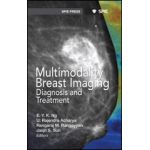


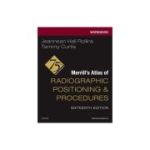

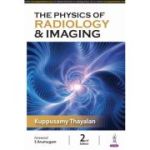
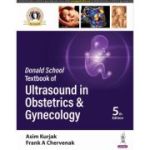

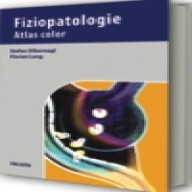



REVIEW-URI